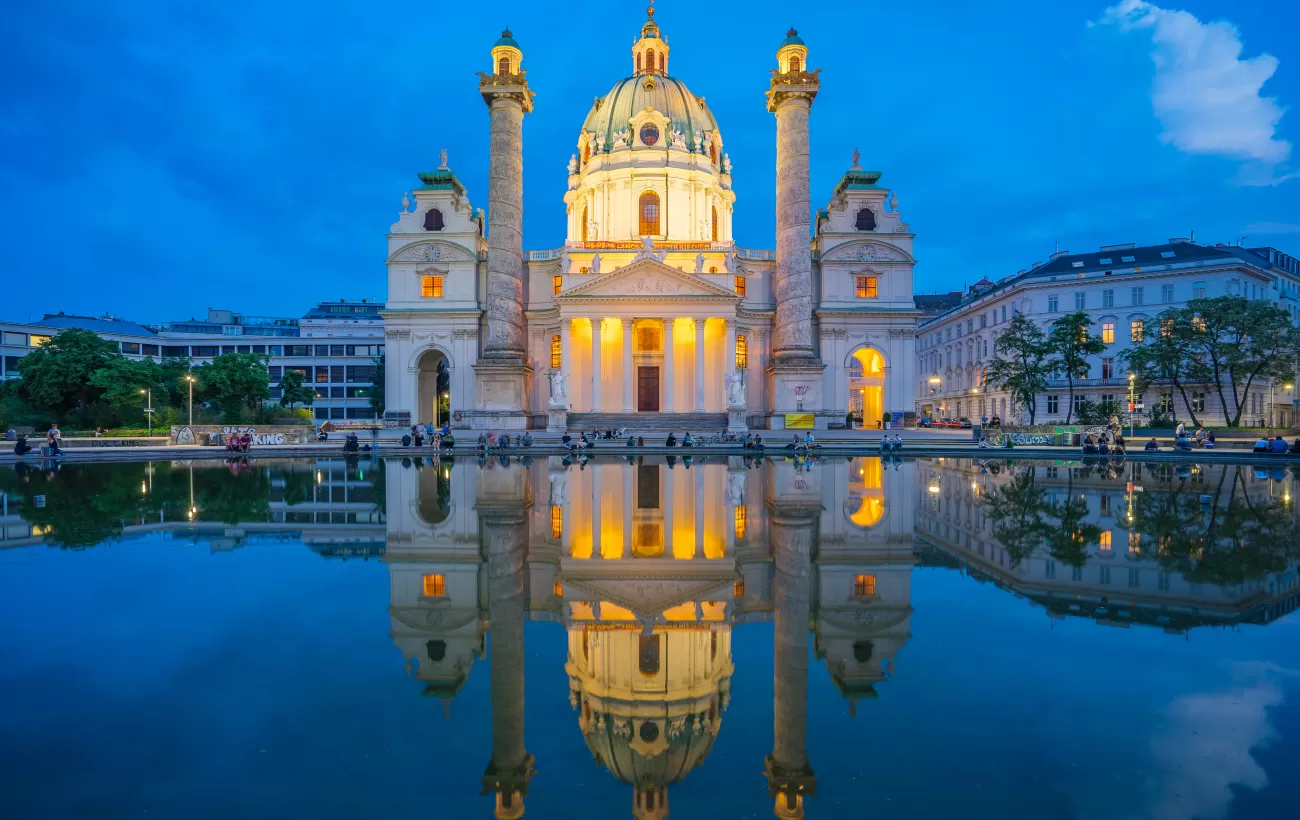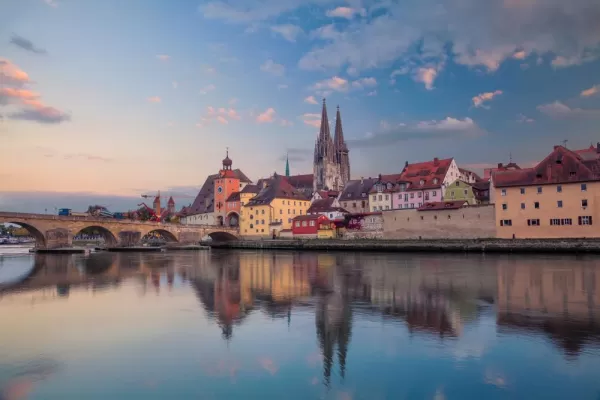Buda and Pest sit on opposite sides of the Danube, each with its own character. Choose from a walking tour, a panoramic city tour, or a Jewish Heritage excursion focused on Jewish history in Budapest.
In the evening, attend the Captain’s Welcome Reception and Dinner.
Choose between:
Budapest Walk with Local Treats
Today, your guide shows you how to snack around Budapest like a local, starting with a tram ride to the House of Parliament. Hop off the tram and take a short walk to your first treat: a coffee break at the First Strudel House of Pest. Energized by your cup of coffee, you’ll continue your walk down to St. Stephen’s Basilica—a handsome Neo-Classical building that is one of Budapest’s most significant cultural sites.
From there, you’ll head to the Great Market Hall to sample some traditional Hungarian fare, such as salami, sausages, and cheese, while your local expert explains the intricacies of Hungarian cuisine.
OR
Jewish Budapest
On your way into the Jewish Quarter, take a panoramic drive along the UNESCO-designated Andrassy Avenue. Among its beautiful neo-Renaissance architecture are such sites as Heroes’ Square, the Franz Liszt Memorial House, the House of Terror, and the Castle District.
You get off the coach near the Dohány Synagogue. The Great Synagogue of Budapest (also known as the Central Synagogue) on Dohány Street is a good starting point to learn about Jewish Budapest. The Dohány Synagogue is the largest in Europe and the 2nd largest Synagogue in the world.
OR
Budapest Panoramic Highlights with Castle Hill
This panoramic tour is a wonderful way to get an overview of the city if you have never been here before. It carries you from Heroes’ Square, created in 1896 to honor the thousand-year anniversary of Hungary’s founding and its greatest historical figures, past some of the city’s most striking architectural sights—Dohány Street Synagogue, the Hungarian National Museum, the state opera house, St. Stephen’s Basilica and the truly stunning Parliament Building—to Castle Hill, which has been called the heart of the nation. The city of Buda began here, when King Béla built a strong keep in 1243 as a defense against Mongol invaders; a castle replaced the simple fortress, and over the centuries other castles replaced that one. The current castle is primarily 18th century; a museum dedicated to Budapest’s archaeological finds is housed there, and the Castle Hill district has been designated a UNESCO World Heritage Site. You’ll go inside the magnificent 700-year-old Matthias Church, named for one of Hungary’s greatest kings, and then wend your way on foot to the picturesque Fisherman’s Bastion, whose seven fairytale-like towers represent the seven tribes that originally settled the region. It offers a glorious view of the city and the Danube below.
Note: Visits to the interior of Matthias Church may not be possible on some weekends and Catholic holidays.






















